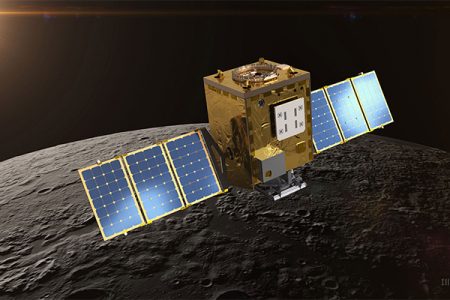 US space agency NASA has approved a small-satellite mission to understand the lunar water cycle, detecting and mapping water on the lunar surface in order to investigate how its form, abundance, and location relate to geology.
US space agency NASA has approved a small-satellite mission to understand the lunar water cycle, detecting and mapping water on the lunar surface in order to investigate how its form, abundance, and location relate to geology.
On November 24, the Lunar Trailblazer, a mission selected under NASA’s Small Innovative Missions for Planetary Exploration (SIMPLEx) programme, passed its Key Decision Point-C (KDP-C) milestone, obtaining agency-level endorsement to begin the final design of hardware and build.
Producing the highest-resolution base maps to locate ice or water trapped in rock at the moon’s surface, Lunar Trailblazer will help support NASA’s Artemis programme, which includes establishing a sustainable presence on the moon by the end of the decade and preparing for crewed missions to Mars.
Peering into the moon’s permanently shadowed regions, Lunar Trailblazer will detect signatures of ice in reflected light, and it will pinpoint the locations of micro-cold traps less than a football field in size. Collecting measurements at multiple times of day over sunlit regions, the mission will help scientists understand whether the water signature on the illuminated surface changes as the lunar surface temperature changes by hundreds of degrees over the course of a lunar day.
“Lunar Trailblazer will confirm whether water on the moon is tightly bound in crystalline rock, as recently suggested by NASA’s SOFIA (Stratospheric Observatory for Infrared Astronomy) observations or loosely bound and mobile as a function of temperature,” said Thomas Zurbuchen, associate administrator for science at the agency’s headquarters in Washington. “This SIMPLEx mission bolsters our portfolio of targetted science missions designed to test pioneering technologies while reducing overall costs using new streamlined processes.”
“We’re excited to help answer big planetary science questions with a small satellite by making the new maps of water on the Moon,” said Bethany Ehlmann, the mission’s principal investigator, of Caltech. “Given the importance of water on the Moon for future robotic and human missions, Lunar Trailblazer will provide critical base maps to guide future exploration.”
“Lunar Trailblazer will vastly advance our understanding of water cycles on airless bodies like the moon,” said Lori Glaze, Director of NASA’s Planetary Science Division at the agency’s headquarters in Washington. “By measuring both direct light and low levels of terrain-scattered light, Lunar Trailblazer will generate comprehensive maps of surface water ice, even in the moon’s darkest regions.”
“Lunar Trailblazer has a talented, multi-institutional team whose collective effort resulted in a successful formulation phase and confirmation review,” said Calina Seybold, Lunar Trailblazer Project manager, at NASA’s Jet Propulsion Laboratory. “I am thrilled that the team has earned the privilege of continuing to our final design and fabrication phase.”
Selected in 2019, Lunar Trailblazer is the second mission from the current round of programmes to receive confirmation and plans to deliver its flight system in October 2022, with a launch currently planned for February 2025. The Janus mission received its confirmation in early September 2020 and will investigate the formation and evolution of small, deep-space “rubble pile” asteroids. The Escape and Plasma Acceleration and Dynamics Explorers (EscaPADE) mission are still in formulation, with its KDP-C planned for summer of 2021.












Add Comment